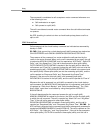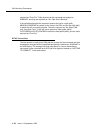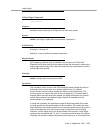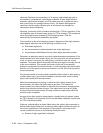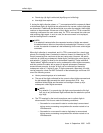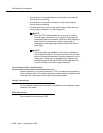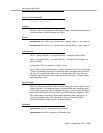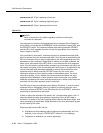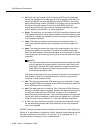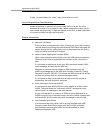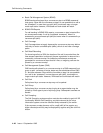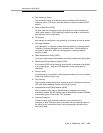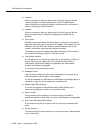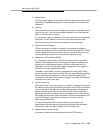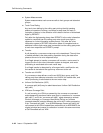
converse-on split (skill)
Issue 4 September 1995
A-37
■ Used for vector conditional branching in a step containing a command
with the
if digits
parameter
■ Tandemed to an ASAI host
DEFINITY can be set up to pass information in-band to the voice information
system. In such a case, the
converse-on
command can outpulse up to two
groups of digits to the voice information system. The digits may serve two major
purposes: the digits may notify the voice information system of the application to
be executed, and they may share call related data, such as ANI (BN) or caller
digits collected by DEFINITY. (In many applications, both application selection
and data sharing are required.)
Since in many cases the digit strings are of variable length, DEFINITY always
appends a pound sign (#) character to the end of each digit string. The
Prompt
and collect
steps in the voice response script must therefore always be
administered to expect ‘‘#’’ as the end-of-string symbol and to include ‘‘#’’ in the
digit count.
The sending of ‘‘#’’ prevents excessive delays caused by digit timeouts, and it
prevents other problems caused by timeouts. It also ensures that each data field
is used to satisfy a single
prompt and collect
step.
Any data passed from DEFINITY to a VRU is outpulsed in-band. The user can
administer two time delays on the System Parameter Features form: ‘‘converse
first data delay’’ and ‘‘converse second data delay.’’ These delays may range
from 0 to 9 seconds with a default of zero seconds for the converse first data
delay and a default of two seconds for the converse second data delay. The
delays are needed to give the VRU time to invoke an application and to allocate a
touch-tone receiver to receive the passed digits.
NOTE:
No time delays are invoked when the keyword ‘‘none’’ is administered.
If <data_1> is not ‘‘none,’’ the converse first data delay timer starts when the call
is answered by the VRU. When the timer expires, the <data_1> digits are
outpulsed in-band to the VRU. The end-of-string character (#) is then outpulsed.
If <data_2> is not ‘‘none,’’ the converse second data delay timer starts when the
end-of-string character (#) from the first digit string is outpulsed. When the timer
expires, the <data_2> digits are outpulsed in-band to the VRU. The end-of-string
character (#) for the second digit string is then outpulsed. The following values
may be administered for <data_1> and <data_2> within the
converse-on
command:
■ Administered digit string: This string can contain up to six characters
consisting of one or more digits (0 through 9) or asterisks (*). The pound
sign (#) may not be included in a digit string because it is reserved as the
end-of-string character. However, a single ‘‘#’’ may be administered.



